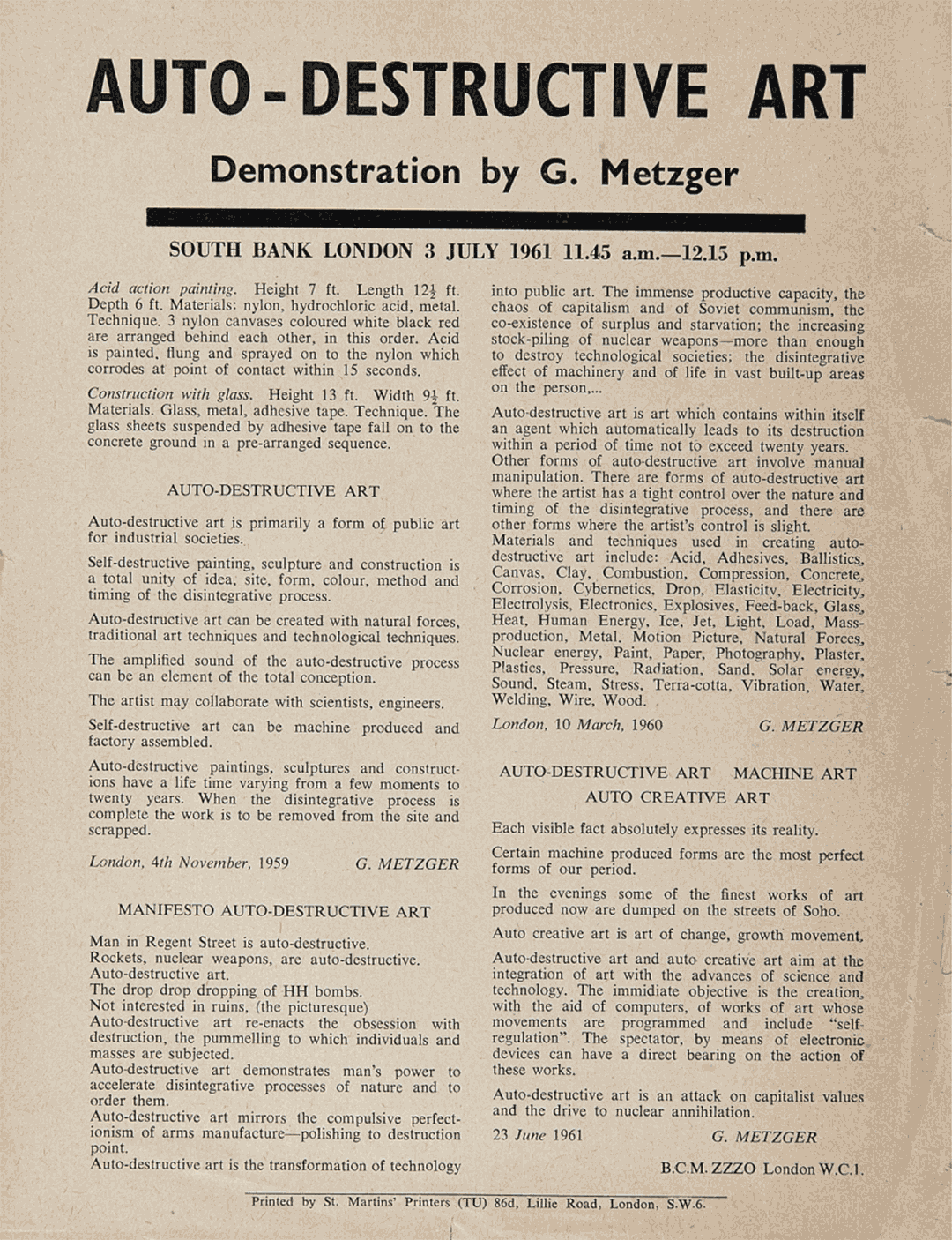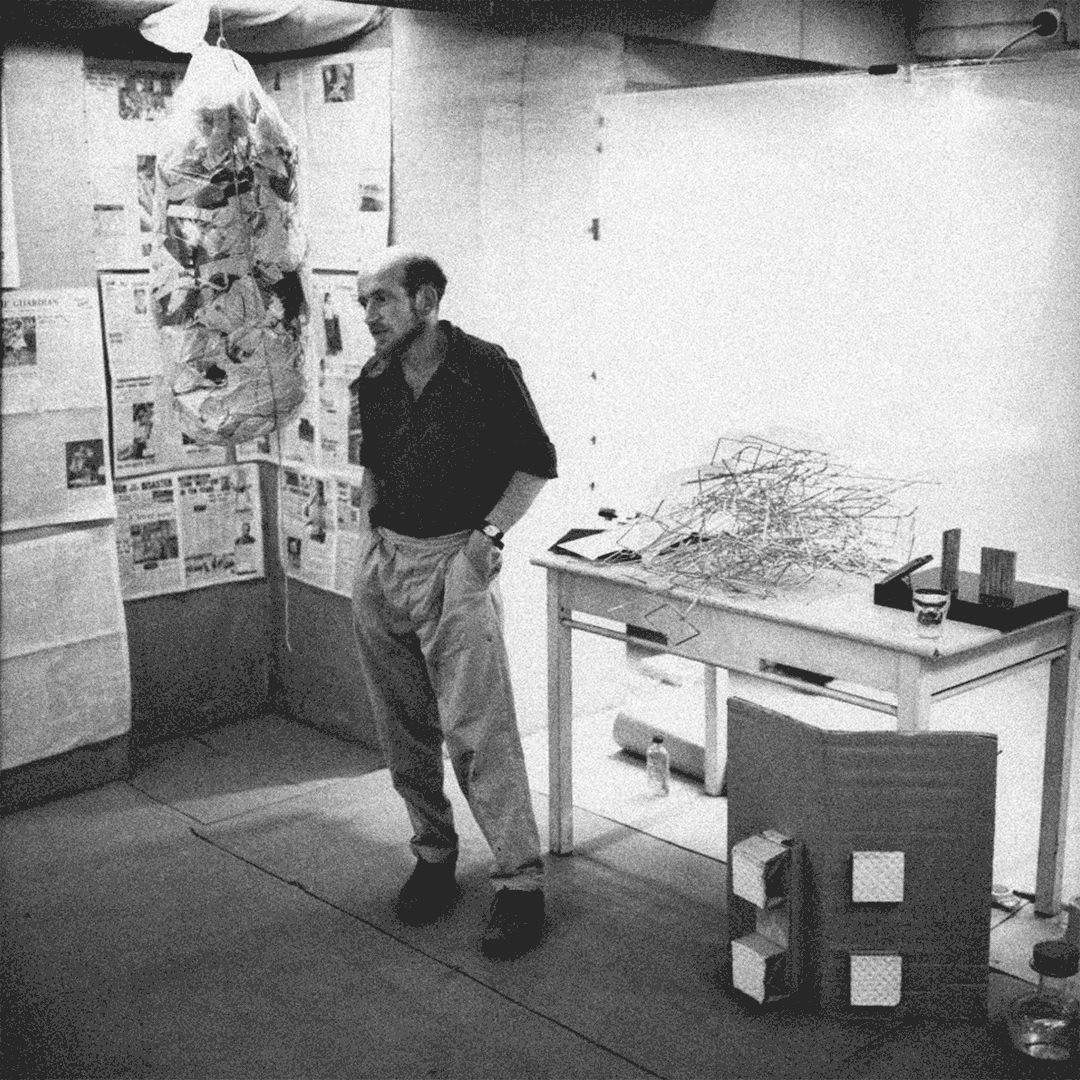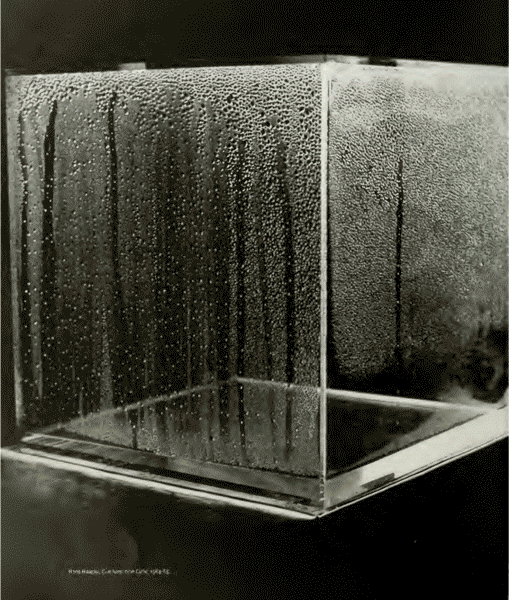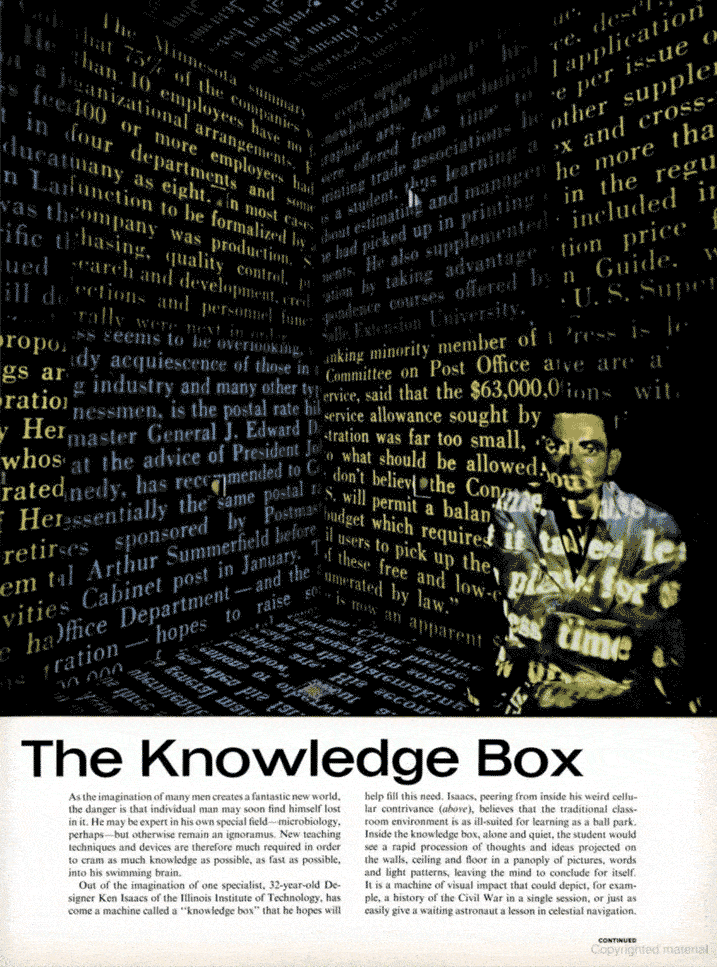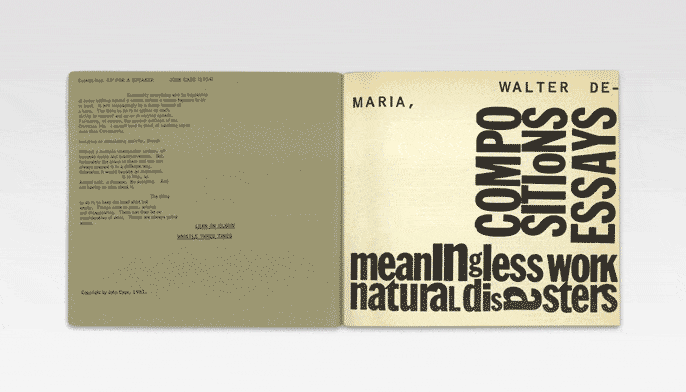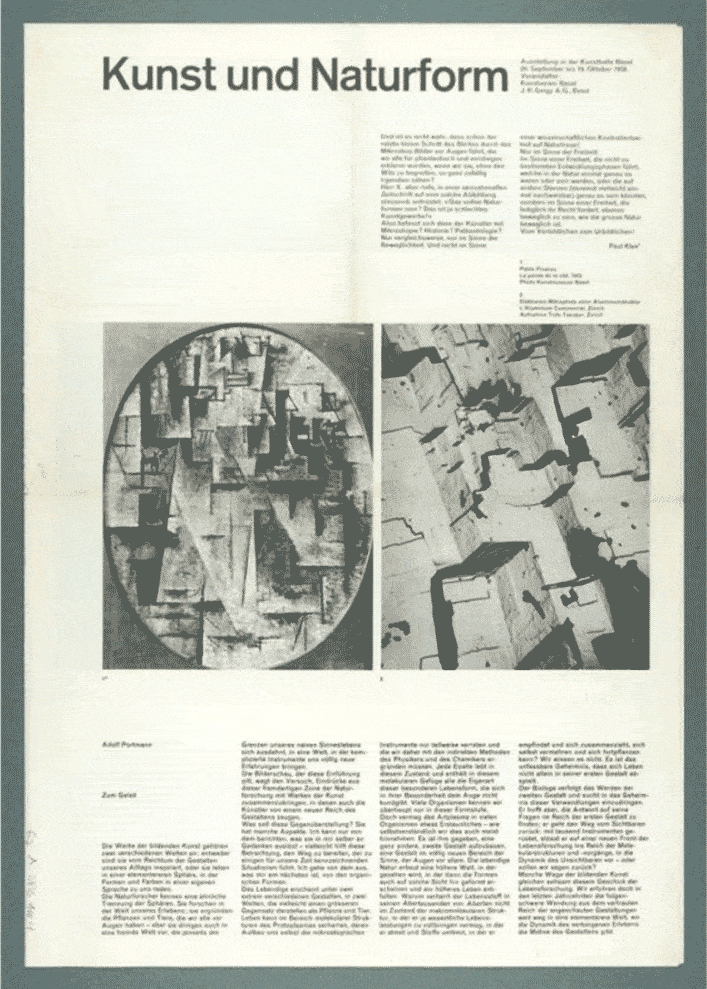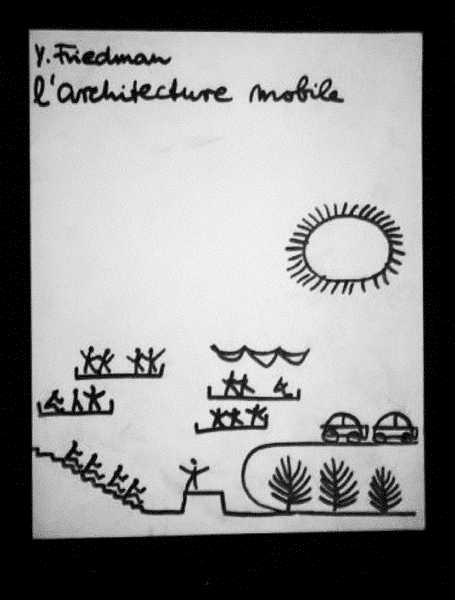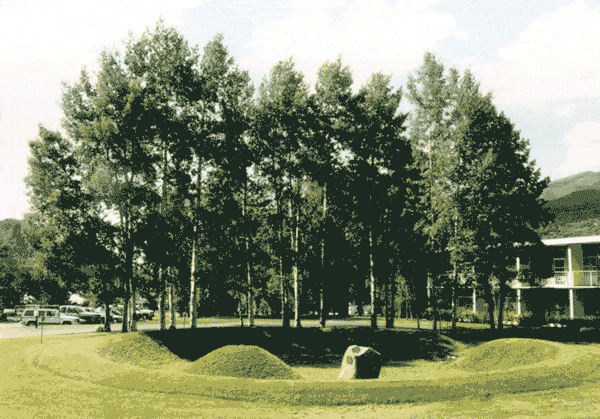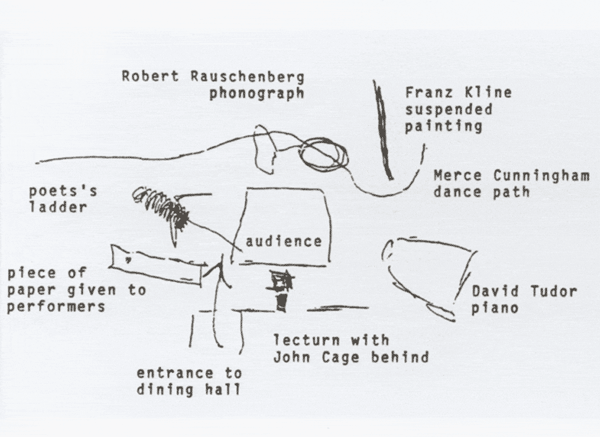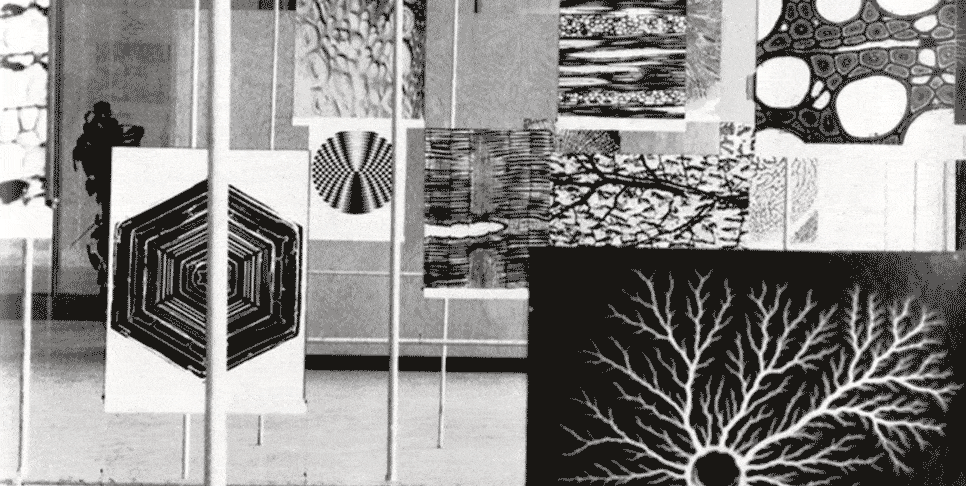|
David Medalla’s “Lament, Sand Machine”, 1964, reproduced in page 54 of "Exploding Galaxies – The Art of David Medalla” by Guy Brett (Kala Press, London, 1995). |
The sand machines were among the earliest examples of earth art.
Jun Terra

Sand Machine
David Medalla
Echoing the “Groundworks” timeline: 1963
I also see the sand machine as a metaphor for the future, when technology will be able to use solar power to help irrigate the world’s deserts.
David Medalla
“Adam Nankervis: The Sand Machine (a concatenation of small metallic cones threaded by a string on an overhead rotary device traced and retraced forms in the sand on a circular dish underneath) was one of the first of your many machines to create pictorial mapping, calligraphy in motion, erasing, redefining and reinventing synoptic lines and moving calligrams. In kineticism there is an obvious attraction towards stable and unstable units. Harnessing a force like wind with a kite, this exploration of invisible components of a greater force, harnessed chaotically and/or serenely – kinetic sculpture somehow proves to be a medium for exploring and harnessing external forces somehow, to show and/or expose a greater external and possibly invisible force. Was this your desire in the making of your machines?
David Medalla: Actually the initial inspiration for my first sand machine came from my memories of the rice terraces of the mountain provinces of the Philippines, where I spent one year of my boyhood as a student at St. Mary’s School in Sagada. I also witnessed a sandstorm in the Sahara desert [sic] on my way to Europe in the spring of 1960.
I gave the title Lament to my first sand machine because I thought of the death of metal. The other sand machines I made, for the exhibition ‘Force Fields’ curated by Guy Brett at MACBA in Barcelona, and at the Hayward Gallery in London in 1999, were of a more festive nature and reminded me of the happy times I spent on the beaches in the Philippine Islands, like the island of Cebu where my mother came from.”
Adam Nankervis — “A Stitch in Time: David Medalla” (interview with the artist),
Mousse Magazine, no. 29 (Summer 2011), Contrappunto, Milan. Accessed here March 2021.
* David Medalla quoted in Guy Brett's Exploding Galaxies – The Art of David Medalla (London: Kala Press, London, 1995), 56.
* Jun Terra — “David Medalla in London”, Third Text, no. 30 (Spring 1995), Taylor & Francis, London. Accessed here March 2021.
|
According to Guy Brett, David Medalla considered his machines – Bubbles, Sand and Mud, all made in the 1960s – "as facets of an exploration of the sculptural possibilities of pulverised, elastic and soluble materials". "I was looking for materials that, in sculpture, would be analogous to the smallest biological unit, the cell; materials that would be capable of multiplication." stated Medalla. The importance of Medalla's innovation was immediatly recognised by his peers (like Gustav Metzger, Hans Haacke, and even Marcel Duchamp), but the mainstream world of art only recognised its relevance much later. |
“maat Explorations” is an ongoing programme that delves into the socio-cultural and environmental transformations stemming from the current bio crisis and ecological destruction. It provides an insight into the hard science of climate intervention and the creative speculations behind innovation-led research to safeguard our planetary co-existence. Prominent in this strand is the installation Earth Bits – Sensing the Planetary, that opens access to the complex interconnectedness between the environmental and the energetic quests and its reverberation through decades of artistic production, political and cultural movements traced from the 1960s until today. On maat ext., a series of #groundworks hashtags introduce the critical explorations that feed into the complex interconnectivity between the environmental and energetic quests, and its reverberation through decades of artistic production, political and cultural movements traced from the 1960s until today. |


